Retired NASA astronaut Nicole Stott was the keynote speaker at the 2023 I Heart Pluto Festival, which celebrates the discovery of Pluto by Lowell Observatory astronomer Clyde Tombaugh in 1930. Stott spoke Feb. 18 at the Orpheum Theater in Flagstaff.

Stott described herself as a retired NASA astronaut, aquanaut, artist, author “and most importantly, a mom.”
Stott flew two missions aboard Space Shuttle Discovery to the Inter-national Space Station, spending 103 days in orbit, and also spent 18 days aboard the underwater Aquarius Reef Base off Key Largo, Fla.
The first person to paint watercolors in space, she later cofounded the Space for Art Foundation, in which children create art inspired by space.
She recently published “Back to Earth: What Life in Space Taught Me About Our Home Planet and Our Mission to Protect It.”
Question: Astronauts often talk about a profound moment in orbit where they kind of realize their relationship to the world. Did you have that moment? And if so, what was it?
Nicole Stott: I think I had moments. Nothing really prepares you for what it’s going to be like.
Before you go anywhere, you look at the pictures and videos, you try to get a sense of what other people might have experienced and, of course, you talk to your colleagues to see what they know, from all aspects of it, the technical to the looking out the window.
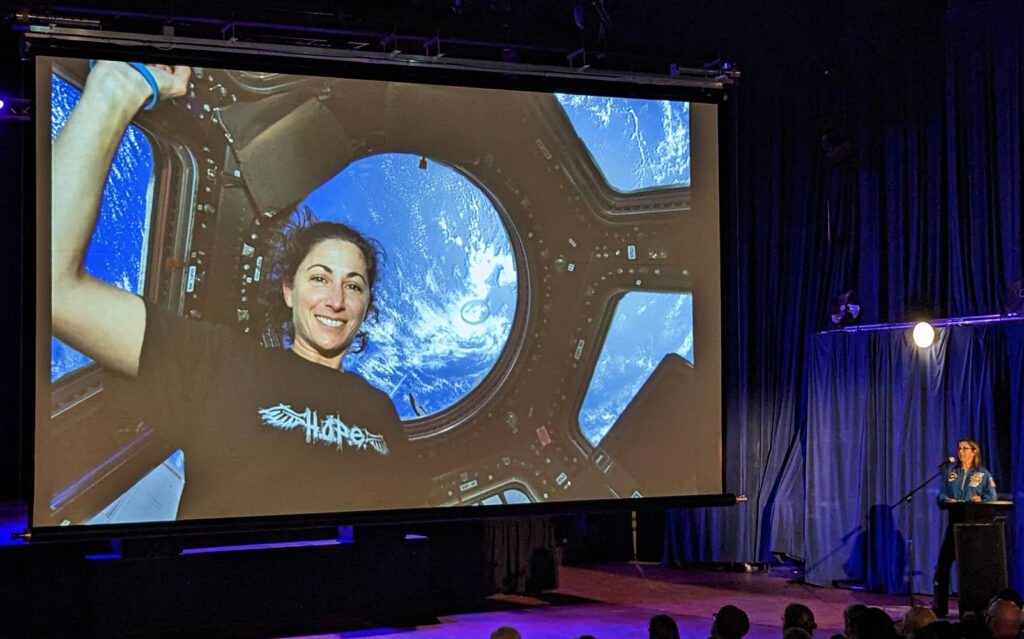
So I think I had very high expectations of what it was going to be like, I knew it would be beautiful. I knew it would be impressive. Getting there, I think where I started feeling it was from the very first look out the window. Oh my gosh, I’m really here. Like, how is this real, right? Oh, I survived that [launch], this is awesome …
The thing that really impressed me from the first time looking at it, and then every time afterwards, was just how crystal clear it was. Everything is just glowing, colorful, all the colors — this iridescent kind of translucence to it. I knew it would be pretty and colorful, but I didn’t expect it to be that intensely glowing. Then it’s against the blackest black I’ve ever seen before in my life. That really surprised me.
I don’t remember when I first got to space, whether we were over water or land somewhere, I just remember being impressed by it — overwhelmingly impressed by it. I think that carried through the whole mission. It evolved in ways of how you looked out the window and what you were looking for and that kind of thing, but always being surprised by it.
We live on a planet right now. We’re all Earthlings, the only border that matters is that thin blue line of atmosphere, right? We really … need to be behaving like roommates, not passengers, not just on a mechanical life support system spaceship but on our planetary species as well.

Question: What’s the same about going into space and going into the ocean?
Nicole Stott: The reason why we go under the sea to prepare to go to space is that it really is the closest analogue to what it’s like to be in space. The experiences that we have there, the way we have to live there — you’re in a place where once your body is saturated with nitrogen, you can’t just swim safely to the surface. So any problem that you have with your crew, you have to deal with it 60 feet underwater. Same thing happens in space, you can’t just hop in your spaceship and come home anytime you want to — you got to learn how to deal as a crew with the things that are happening up there.
I think psychologically, dealing with it the same way you would if you were in space and then we take advantage of that by doing science inside of the undersea habitat like we would do on the space station, communicating with our topside team from undersea the same way we can communicate with mission control from the space station or when we go out in our dive gear, we’re preparing as a crew just like we would if we were going out to do a spacewalk.
So all of those things the way you have to live with your crew and deal with each other and all of the work that you’re doing. It is absolutely the closest to living in space.
We kind of joke we had to go live and work in inner space to learn how to live and work in outer space. You have this sense of interconnectivity of absolutely everything and everyone, except now instead of looking out the window of the spaceship surrounding the planet, you’re underwater and the planet’s surrounding you. The perspective shift is a very positive and meaningful one. It’s just more proof you don’t have to travel to outer space to understand our place in the universe, so to speak.
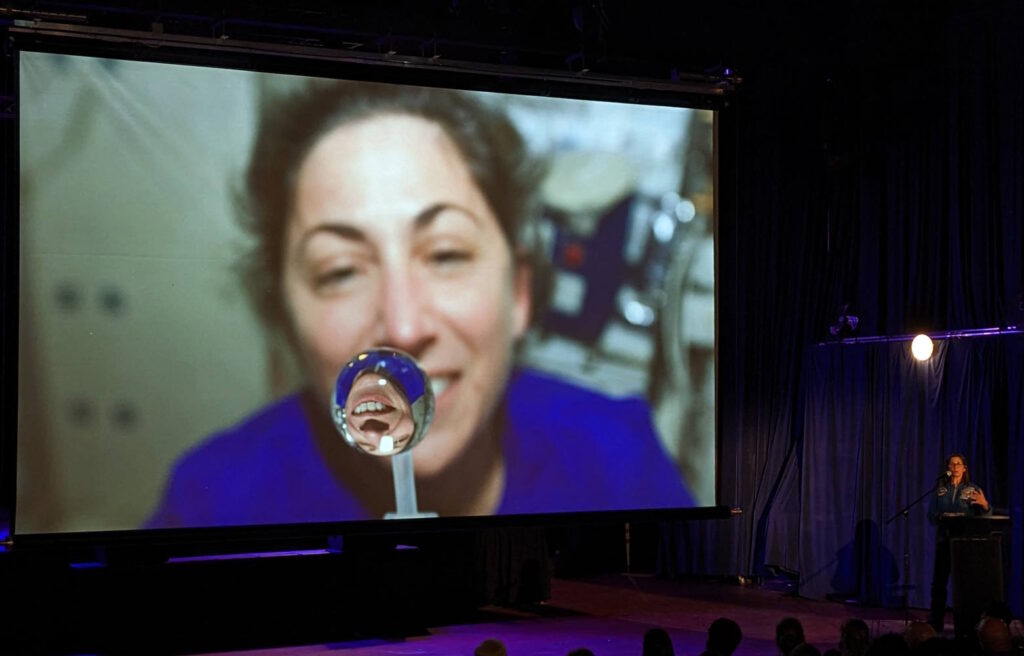
Question: What’s one life lesson you learned while on the International Space Station?
Nicole Stott: I think summing it all up is that you know what we do — te getting there, living there, even for a short period of time, coming home safely. It’s all a really complex thing, the science, the relationships, all of it.
For me, I was really impressed most by the lesson, kind of a simple lessons of stuff we already know, before ever going to space and then appreciating those things in a whole new way.
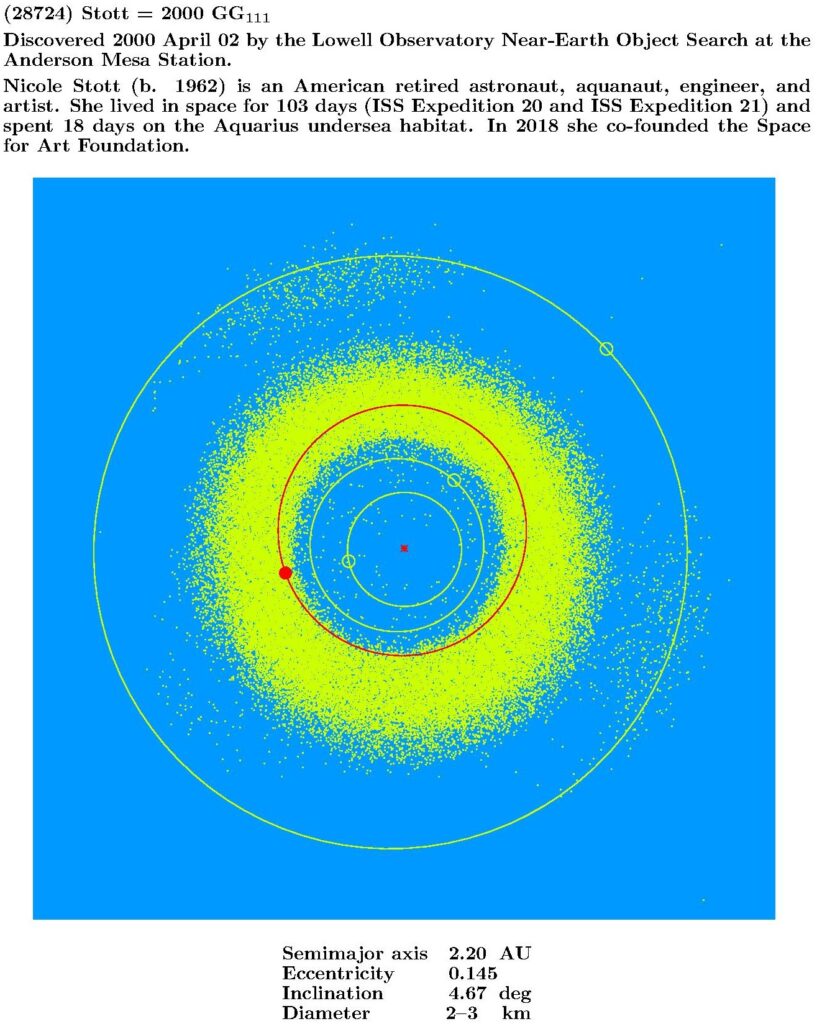
Question: Why did you paint in space?
Nicole Stott: On my first spaceflight, I was really fortunate to be able to watercolor paint in space. I brought up this little watercolor kit. Astronauts have written poetry in space; my friend [astronaut] Karen [Nyberg, Ph.D.] quilted while she was on the space station.
Humans like bringing our humanity with us wherever we go. So I brought watercolors with me. When I was thinking about retiring from NASA, I wanted to find a way to kind of meaningfully share those spaceflight experiences [and] I kept coming back to that painting experience in space.
I thought, “man, you know, art’s kind of this universal communicator anyway.”
Doesn’t really matter if people like my art or not for me, it was more important. OK, how can I use it as a way to engage them? Even knowing there’s an International Space Station, just knowing that and understanding that everything we’re doing there is ultimately about improving life on Earth and how we need to be behaving like crewmates. We need to take care of our life support system. It just seemed like this really great way to do that.
I started doing that by painting my interpretation of a picture I’d taken of something on Earth, most of my earth observation stuff.
It was so cool to see how people really did engage with the backstory. They wanted to know, “what’s this based on?” “What picture is this?” “Where were you when you took this picture?” Then they end up being the ones that want to know where the space station is, and want to know the kind of work that’s going on there and want the app on their phone that lets them put their ZIP code in and tell them when the space station is flying over spotthestation.nasa.gov].
So I think it’s a really it’s a really powerful way to like establish relationships with people to, share stories that they might not have even been known they were interested in before.
Then that’s carried forward in such a powerful way for me in terms of discovering my next mission in life, which is to use art as a way to work with kids around the world.
Doing space-themed art therapy projects with them — I really do feel like I got to go to space so I could come back to Earth and work with these kids doing these projects through our space for our foundation.
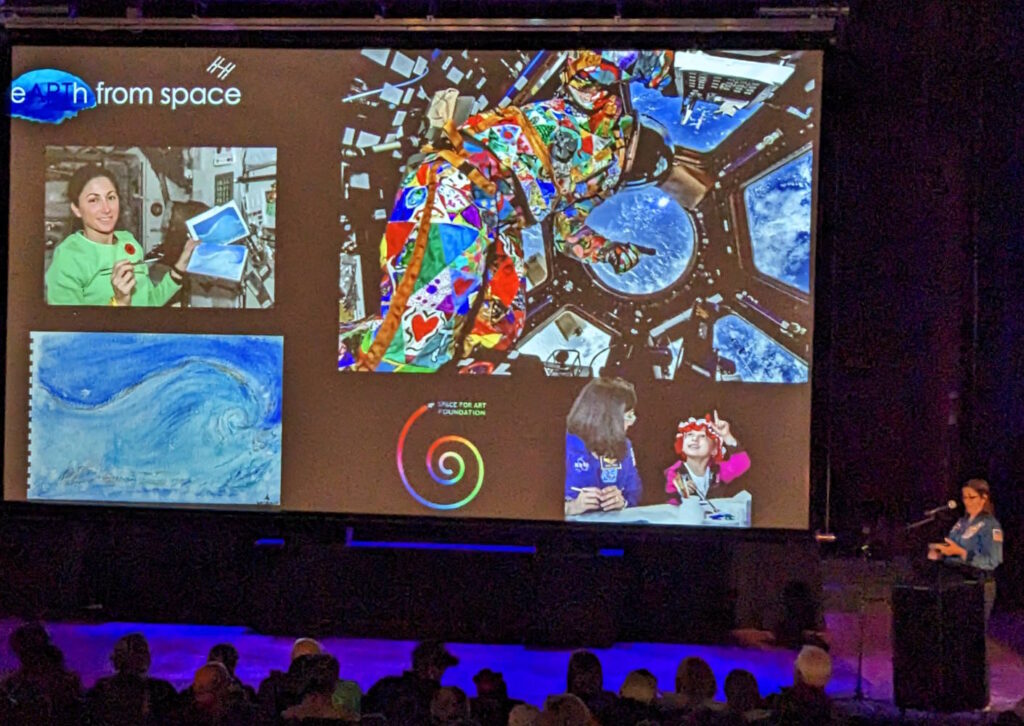
Question: What compelled you to start the Space for Art Foundation?
Nicole Stott: I was doing my own artwork as a way to share the whole spaceflight experience. I’m still living in Houston, and one of my friends from Johnson Space Center invited me out and said, “I’ve got this guy. He’s an artist. He started the art medicine program at MD Anderson [Cancer Center] and the pediatric cancer center in Houston. He wants to do a space project and we’re thinking spacesuits might be the thing to do. Would you want you know would you want to go out to the hospital and paint with the kids?”
I honestly thought, yeah, sure, I’ll go do that. That’ll be fun. It’ll be this. I really thought it’d be like one of these one-time things
I’ll tell you, from that first session, we’re painting these little individual pieces of artwork with these kids that all knew at some point, all that art was going to be sewn together into this really cool-looking art spacesuit, and it might get to fly to space.

You’re with these kids and their families who are going through what you hope is the worst thing they will ever have to deal with in their lives and you’re sitting there talking to him about space. I’m like, “Man, space really is really inspirational, isn’t it?” You’re seeing this reflected in the way the kids are responding to just painting and talking about space and next thing you know, these kids that are going through what you hope is the worst thing they ever have to deal with in their lives are talking to you about their future.
They’re they’re saying like these beyond their years wisdom, things like “Miss Nicole, you will go into space. That must be a lot like what I’m doing here in the hospital.” I’m thinking “how in the world?” you know, goosebumps. How could this young child going through what she’s going through comparing what I dreamed of doing to what she’s going through in this hospital? She just keeps saying, matter-of-factly, “You know, you don’t get to go outside anytime you want. Can’t see your mommy and daddy and friends the same way any time you want. You’re eating all different kinds of foods. Your body’s changing. They’re doing all kinds of tests on you. There’s radiation.”
How does this 7-year-old — ? But it was so perfect. It was —absolutely. With that young girl, I was like, “OK, this is it. I got to keep doing this” and we just figured out how to continue doing it.
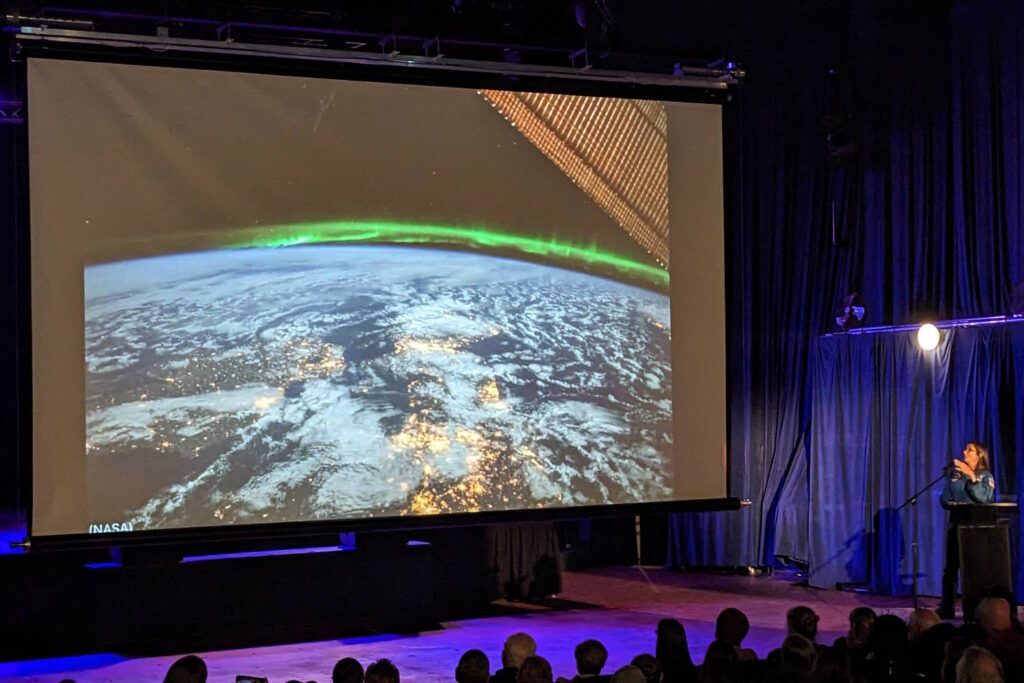
Question: Most of us have seen rocket launches. So what’s it like to be on top of a rocket with 7 million pounds of thrust behind you?
Nicole Stott: So — it’s awesome. I mean, the Space Shuttle is a very different ride to the kind of rockets we’re launching now, with the capsules and things. Amazing.
But it’s much easier to be the person who’s trained and strapping in to the rocket than to be the husband or the 7-year-old son or the mother.
I could talk about this one forever, but here’s the short answer: You get strapped in a couple hours ahead. You’ve trained and prepared for this and you’re just laying there. You’re on your back in the ship, ready to go and you get comfortable because the crew doesn’t really have anything to do with the countdown until about 20 minutes before launch. So I remember napping and just being comfortable. There’s a total respect — it’s not that you’re not aware of that there’s going to be 7 million pounds of exploding rocket stuff underneath you. You just have kind of a diligence in the thoughts of what’s coming. You believe that with all the training you’ve done, that you’re as much as humanly possible ready to deal with what might go wrong if it does …
I imagined this is going to be really rumbly and shaky and it was just kind of a low rumble. But when it did it, the fuel flows and the engines light and — they’re at an angle, so the whole vehicle tips like 10 feet forward — so you feel this whole like motion of physically moving and then as soon as it’s vertical, that’s when the count hits zero and those big solid rocket boosters light.
That’s when you’re like, “Oh my gosh, was I ever on a launch pad?” It feels like you’re kicked from behind and all of a sudden you’re starting to really shake like you never imagined your body could shake — like Jello inside. You feel like three people are starting to sit on top of you.

Photo courtesy of NASA
I remember this human response of just wanting to high-five Al [astronaut Alvin Drew] who sat next to me and I need to smile. The smile comes across your face and you don’t want to be unprofessional, but you’re a little bit of a “whoo hoo!” and just immersed in it.
Two minutes go by and those solid rocket boosters separate with a big bang and flash and then you’re not shaking anymore, but you’re still getting pressed down in your seat. Six minutes later, the external tanks separated and it was you went from exploding off the pad to this liberating, freeing, relax-your-arms-float-up [feeling].
The pen floats up on the end of the string on your checklist and you just cannot wait to get out of your seat. “What’s it’s going to feel like to float? Float and fly and get to the window.”
Yeah, that’s the short version.
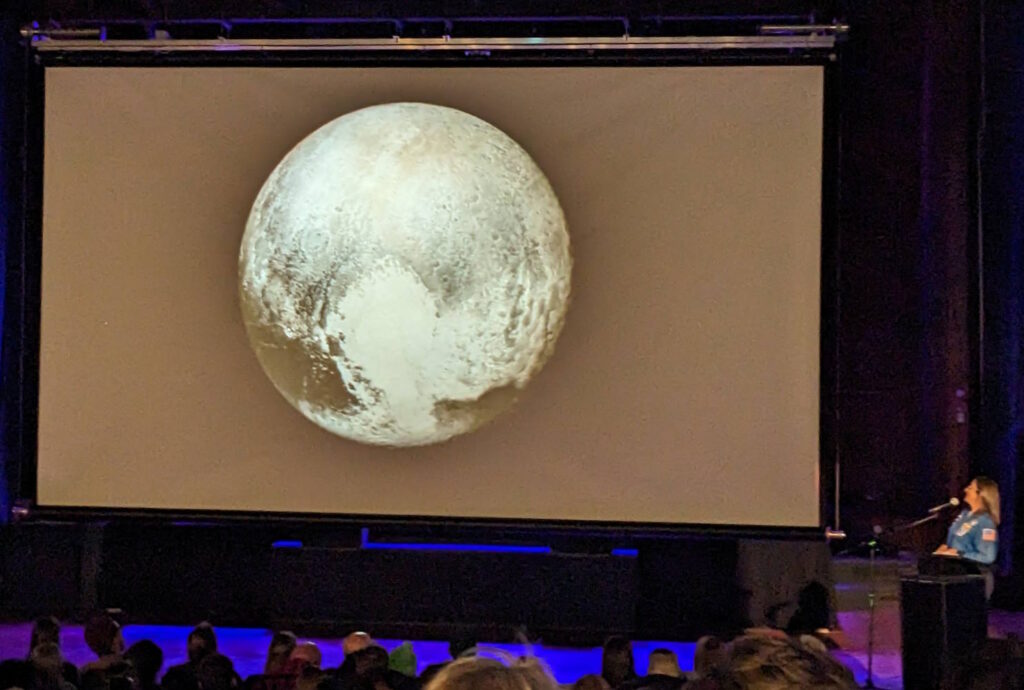
Question: What makes the discovery of Pluto unique? Why did you want to be here today to talk?
Nicole Stott: Everyone should celebrate [Pluto]. Yeah, I’m on a team where Pluto was a planet, by the way. When it was discovered, it was a planet. It gives us the opportunity to really reflect — Pluto’s out there — It gives us a sense of who and where we are too. We live on a planet; it’s not like there’s these other these other things that are planets out there — we’re on a planet as well.
This reality check, I think of who and where we are, comes from discoveries like of something like Pluto.
I was at Lowell [Observatory] today, and [Lowell Observatory historian] Kevin [Schindler] is showing me these two slides [Clyde] Tombaugh was having to look at like through microscope — this one image that was taken at one point to this other image that was taken to see what’s different in it and this tiny little one on that — that’s Pluto.
How do they know? But it’s just awesome and it’s wonderful and we have a relationship with it in this solar syste. It makes you think about the universe. I feel things like this celebration of things are what grounds us to who and where we are in space together. It should absolutely be encouraging us to with our feet firmly on the planet that’s spinning at 1,000 miles an hour considering what you know what we’re in space with. It makes us just want to learn even more.
Question: It’s been we know less about the bottom of our oceans than we do about our solar system. Do you think that’s true?
Nicole Stott: No I don’t think that, I don’t. I appreciate that sentiment though. We’ve got body of water that gives us life that is just right here with us on Earth and we don’t know a lot. There is so much more to explore.
I think about all the places on Earth that are otherworldly in some way — the awe and wonder that comes from that and just appreciating our place in space. But I think even from the standpoint of the solar system, it’s at least on par. I don’t think it’s so, so different.
Then when you start thinking, this solar system and this galaxy that’s in this universe that’s in this kind of mind-boggling thing. I don’t even know how to describe it.
I have memories of looking at a National Geographic-like map of the known universe and it’s this oval drawing on a white sheet of paper. Even as a kid of 10, you go for where on the map you are and then you get to the edge, and OK, “what’s all this white stuff?” Is that the unknown universe? Is that heaven? Is that what they mean by infinity?”
There’s so much out there that whether it’s discovering Pluto, or being in awe of what we’re seeing and learning from the James Webb Telescope imagery that we’re seeing now, to what is beneath the surface of our ocean. It all merits exploration and understanding.
It’s the kind of stuff that lets us know more about who and where we are and how we should be behaving together on our planetary spaceship with each other.
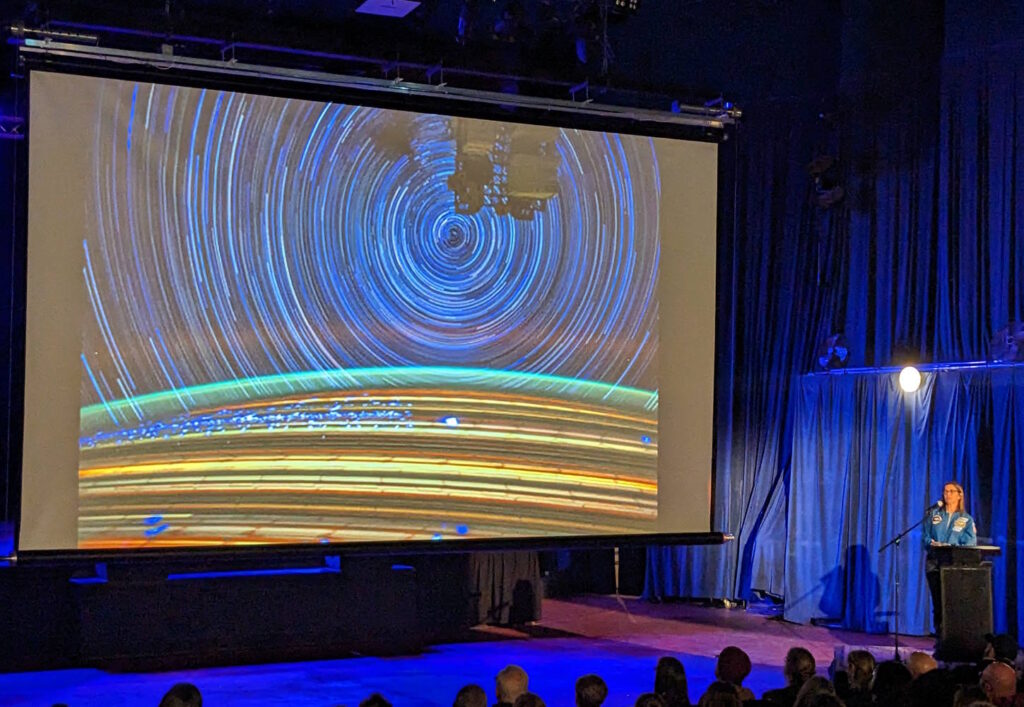
Question: What advice would you give to young women?
Nicole Stott:It’s the same advice that I would give, I did give, to my son: There’s going to be things that you know as you’re growing up that you’re excited about, you’re curious about and to act on that curiosity, really pursue that
Those kinds of things — opportunities — opened up to you because of that. You meet people that will lift you up in that curiousness and that desire to learn more about something
The other thing I would say, is the rocket ship doesn’t care if you’re a boy or girl, right? We do that to ourselves, and we’ve got to find ways to stop doing that to ourselves.
Especially as young women, I see this happening. I hate to stereotype anything, but girls tend to do this. We need to have — it’s not bad — to need to have an example of something out there, which is why I feel like I really need to be present for for younger women.
I hope all of you are, too. But we need to stop telling ourselves “No.” Somebody else might tell you, “Nope,” but do not tell yourself “No.” I almost did that to myself. I almost didn’t even pick up the pen and fill out the [NASA astronaut] application. There’s things that you will have control of, like filling out the application to be an astronaut, and you’ve got to act on those things.

Question: Along those same lines, what would you tell children who have an interest in science and space?
Nicole Stott: They can learn so much about themselves by learning about the world and the space that surrounds us.
Little kids are so cool with the way they will learn stuff and open themselves up. We need to be encouraging our kids to use their whole brains. It’s great to say, “Learn more about science,” but I want kids to be the best problem-solvers they can be and so, you know, if you like art, bring art in. If you play music, keep doing that. If you want to dance, I mean, all these kinds of things that I think allow us to leverage all of our talents, and our kids — they’re so open to doing that when they’re little. We have to encourage them to keep doing that.




